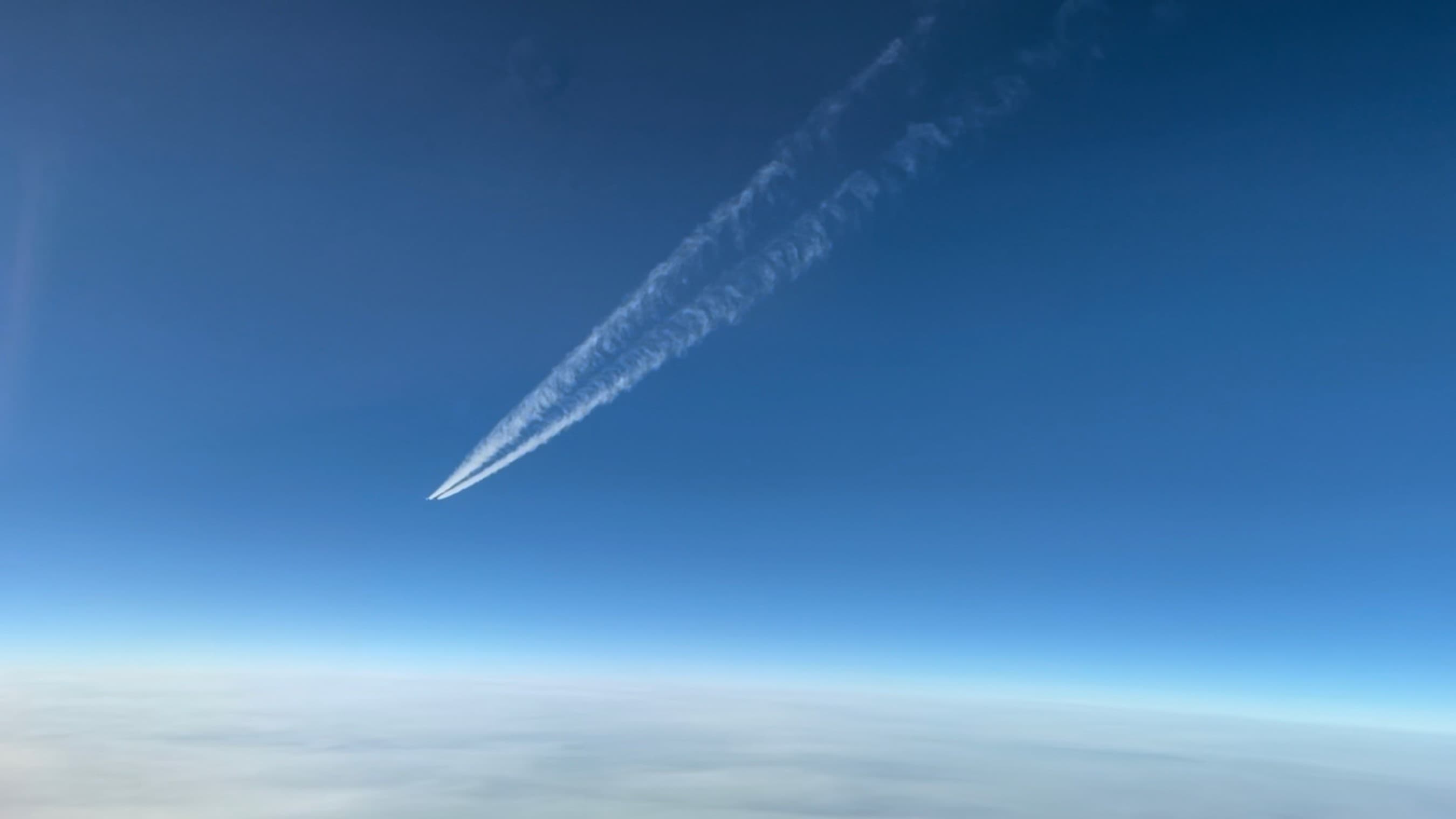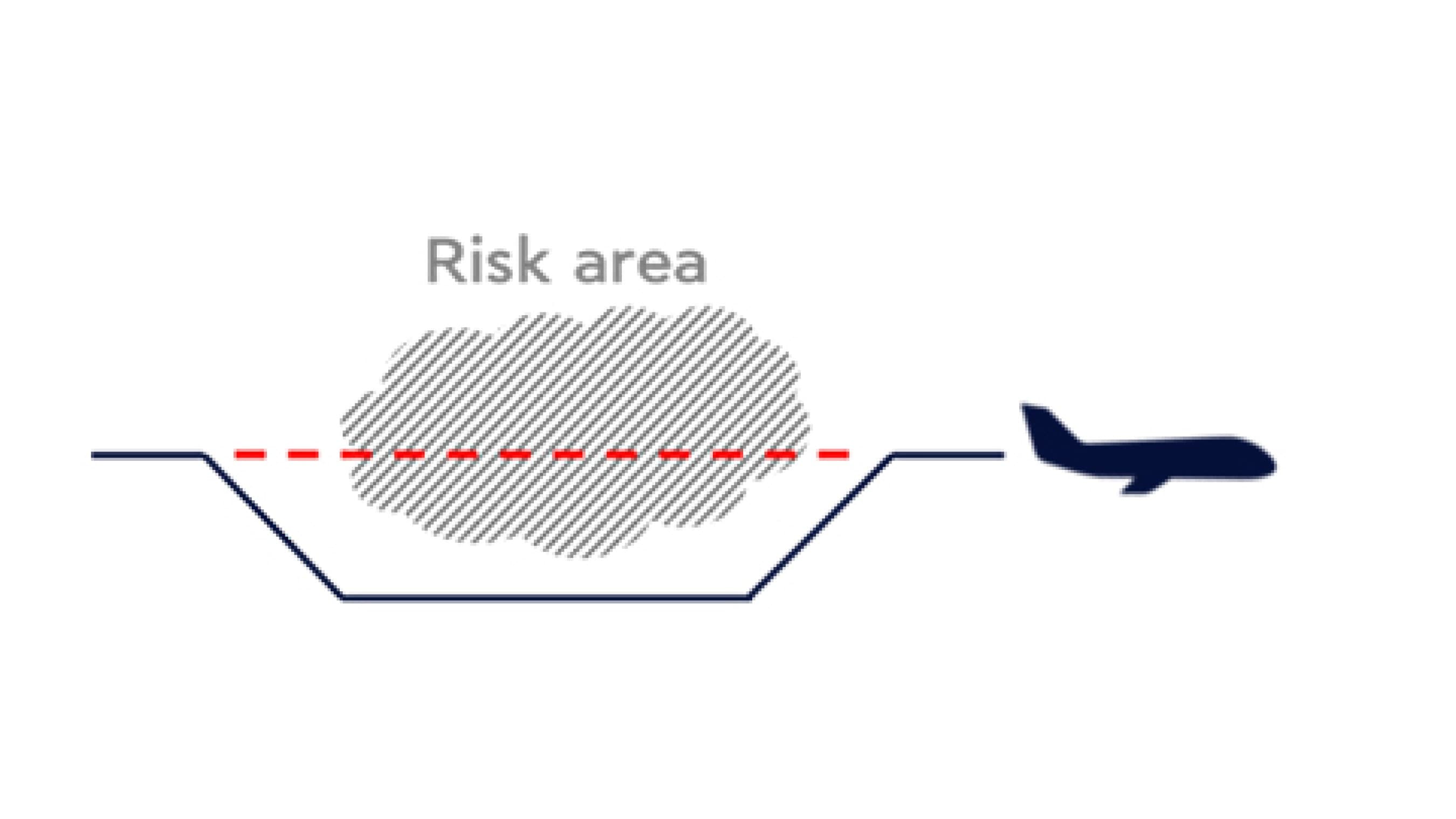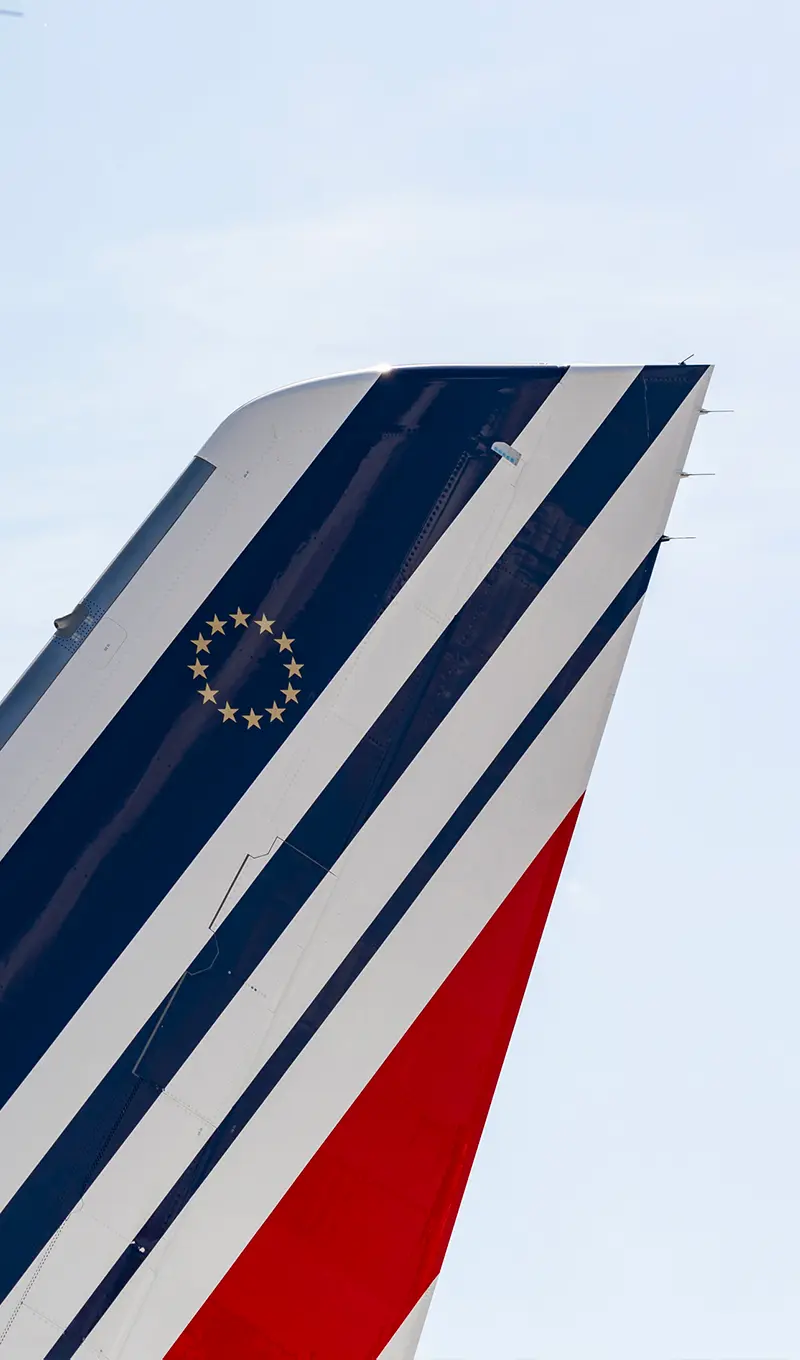
The other impacts of aviation on the climate
© Air France
© Air France
The global impact of aviation on climate change
In addition to CO₂, aviation has other “non-CO₂ effects” on climate change. These effects result from complex interactions between aircraft emissions and the atmosphere. They are mainly related to the formation of contrails (short for condensation trails), and also include the emission of nitrogen oxides and the modification of natural clouds by soot.
There are still many uncertainties about the assessment of the climate impact of these non-CO₂ effects, but the latest scientific consensus is that they have a significant warming impact, especially in the short-term, of the same order of magnitude as CO₂ emissions. Air France is actively committed to identifying and implementing solutions to reduce non-CO₂ effects, and thus minimizing the climate impact of its flights.

Climaviation, conducting research into aviation and climate
© Climaviation
What is the climate impact of non-CO₂ effects ?
The latest scientific research on the cumulative effects of past aviation emissions from 1940 to the present day has highlighted the significant impact of non-CO₂ effects. These accounted for two-thirds of aviation’s radiative forcing in 2018, meaning the change in the Earth’s energy balance. Uncertainties remain on the precise assessment of the impact, as radiative forcing could range from half to three times that of CO₂.

The contribution of global aviation to anthropogenic climate forcing for 2000 to 2018, Lee et Al
© Lee et al. (2021)
It is therefore the responsibility of the Air France Group to reduce its non-CO₂ effects as much as possible.
Contrail formation
Condensation trails, or contrails, are responsible for at least 80% of the non- CO₂ effects.
Contrail formation
The white streaks that form in the sky behind an aircraft are known as condensation trails (contrails). When an aircraft passes through sufficiently cold and humid atmospheric conditions, the water vapor in the air transforms into an artificial cloud, the formation of which is facilitated by the presence of soot particles emitted by the engines. In a mildly humid atmosphere, these contrails have a lifetime of a few minutes and therefore have a minor impact on the climate.

Non-persistent contrail
© Air France
Contrails persist in certain risk areas
But in a super-saturated humid atmosphere, the contrails will persist, gradually spreading into sprawling cirrus clouds, which can linger for up to ten hours. They have a twofold impact on the climate – a cooling effect due to the reflection of solar radiation, and a greenhouse effect, which warms the atmosphere. At night, in the absence of sunlight, all persistent contrails are warming.
So not all flights have the same impact – depending on the time of day, the trajectory or the season, contrails can have a warming, cooling, or neutral effect.

Persistent contrails and cirrus clouds
© Air France
The Air France group is involved in numerous research projects aimed at improving understanding of this phenomena and accelerating the deployment of measures to reduce non-CO₂ effects.
The research commitments of the Air France Group

© IAGOS
IAGOS partnership: An aircraft equipped with scientific sensors
Since 2013, in partnership with the CNRS, Air France has been taking part in IAGOS (In Service Aircraft for a Global Observing System), a European research infrastructure. Air France has equipped an Airbus A330 with scientific sensors that measure greenhouse gases and humidity at high altitudes in the atmosphere. This rare data is transmitted to the CNRS and made available to researchers worldwide. The data collected is used to study climate change and the composition of the atmosphere.
Collaboration with Météo France: A more reliable prediction of persistent contrail-prone areas
Current weather forecasts do not allow for anticipating with sufficient precision the areas where persistent contrails will form along a flight path. Since 2021, Air France has been working with Météo France to improve the prediction of these risk areas.
Within this framework, Air France has launched COOP, a Contrail Observation Program to collect observations of contrails and share them with Météo France and other research organizations.

Forecast of climat risk areas – copyright Météo France
© Météo France
Participation in the European research project CICONIA
The CICONIA European project combines a scientific and operational approach to determine the most effective solutions for reducing the climate impact of non-CO₂ effects, and to implement them on a large scale. The project encompasses the entire ecosystem – research bodies, weather services, aircraft manufacturers, airlines, and air traffic control.
Over a three-year period starting from June 2023, at the request of the research organizations taking part in the project, and in collaboration with air traffic control, Air France will contribute its expertise to the project, and conduct flight trials in order to validate contrail avoidance strategies.
© Air France
In addition to contributing to research projects, the Air France group is studying the efficiency and feasibility of different solutions to reduce non-CO₂ effects, and in 2023 initiated the first of a series of tests.
Future solutions to reduce contrails
A small number of flights are believed to account for most of the climate impact caused by contrails. In 2019, on a global scale, less than 3% of flights were responsible for 80% of the climate impact related to contrails (Imperial College).
Detecting these flights in advance will, in the future, allow for the implementation of solutions to reduce their climate impact. Two potential solutions are under study: changes in flight trajectory and improvement in fuel quality. As of now, neither is mature enough to be deployed on a large scale.
Avoiding flying in areas at risk
One promising strategy is to modify the flight path to avoid creating warming contrails. In most cases, this solution results in additional fuel consumption, and consequently additional CO₂ emissions.
These flight path changes will therefore only be implemented if they are globally beneficial for the climate. They will require a precise forecast of the areas incurring a risk for the climate, as well as a comparison of the short-term benefit of avoiding contrails, with the long-term negative effect of the additional CO₂ emissions generated by the avoidance.

© Air France
This solution may also pose operational challenges when implemented, particularly in an increasingly congested airspace.

© Air France
Improving fuel quality
Certain fuel components, known as aromatics, play a role in soot production. Removing part of these components from fossil fuels, or using sustainable aviation fuels (SAF) that are naturally free of them, reduces the formation of soot, which could lead to a significant reduction in contrail formation. The use of sustainable aviation fuels (SAF) also has the advantage of reducing CO₂ emissions.
Your questions
What is the future impact of a flight on the climate? And how can we effectively compare CO₂ with non-CO₂ effects?
Radiative forcing does not directly provide the CO₂ equivalent of non-CO₂ effects. To estimate the future climate impact of a flight taken today, there are various methods that consider the timescales over which these phenomena operate (hundreds of years for CO₂, compared to hours to years for non-CO₂ effects). These methods involve measuring, in 20, 50 or 100 years, for a given flight, the temperature variations or changes in the Earth’s energy balance. Depending on the chosen methodology, the weight of non-CO₂ effects relative to CO₂ varies significantly.
Using the 100-year Global Warming Potential (referred to as GWP100), which is the standard method chosen to compare greenhouse gases under the Paris Agreements, non-CO₂ effects accounted for roughly half (44%) of the total climate impact of aviation in 2018.
This choice of method, which is still under discussion, is crucial for comparing non-CO₂ effects with CO₂ and make informed decisions for the climate. It will require global scientific and political consensus. But regardless of the chosen methodology, the impact of non-CO₂ effects on the climate remains significant.
Has the Air France group already implemented solutions to reduce condensation trails?
The main short-term solution for reducing non-CO₂ effects is to modify flight paths to avoid areas conducive to contrail formation. But this solution is not mature enough to be deployed on a large scale. The main risk is to implement unnecessary route adjustments which could be harmful to the climate. Air France launched a test phase to evaluate and demonstrate the effectiveness of these solutions.
In 2023, in collaboration with Météo France, Air France experimented with a contrail avoidance process on four European and intercontinental flights: the first step involved forecasting the areas where persistent contrails will form, the second step involved studying the avoidance of risk zones in the flight path and executing the flight, and the final step involved verifying the effectiveness of the action using satellite imagery.
A new, larger-scale experimentation is planned for late 2024 as part of the European project CICONIA.
What is the impact of nitrogen oxides (NOx) on the climate?
Nitrogen oxides (also known as NOx) are formed at high temperatures during combustion in engines. At low altitudes, they degrade air quality and have an impact on human health. When emitted at high altitudes, NOx contributes to global warming by forming ozone, while it has a cooling effect by destroying atmospheric methane.
According to current scientific knowledge, over the period 1940-2018, NOx has had a net warming effect, equivalent to half that of CO₂. Interactions between NOx and the climate are still the subject of scientific research – the effect of NOx, which depends on atmospheric composition, could be cooling in the future.
Reducing NOx emissions often requires making a compromise with CO₂: this is the case, for example, with changes in flight altitude, or engine design.
